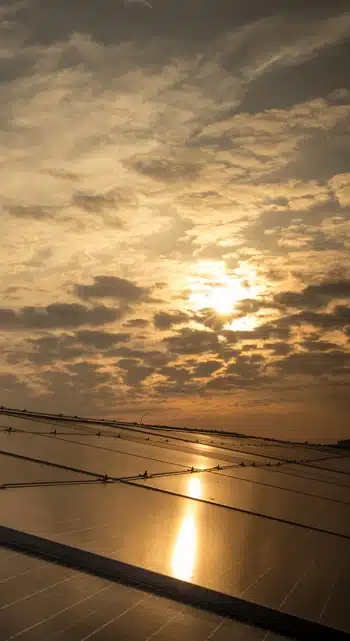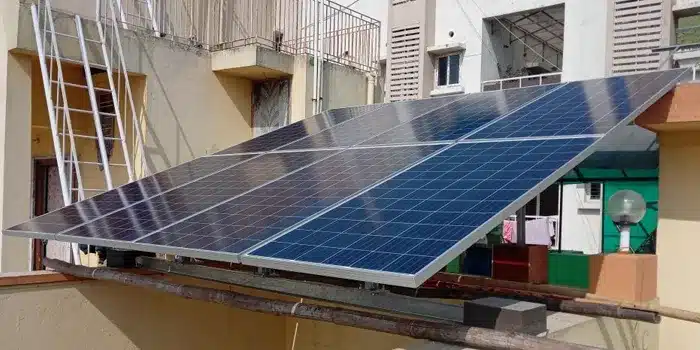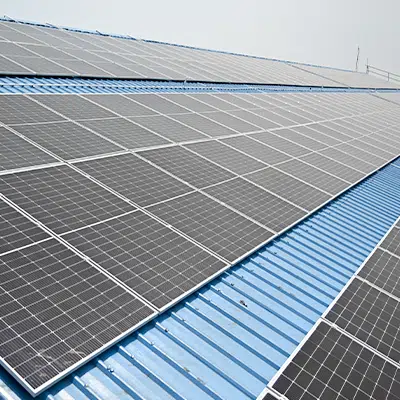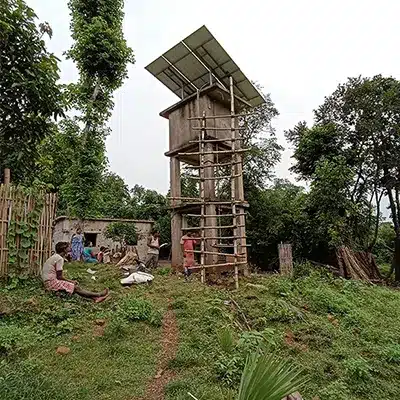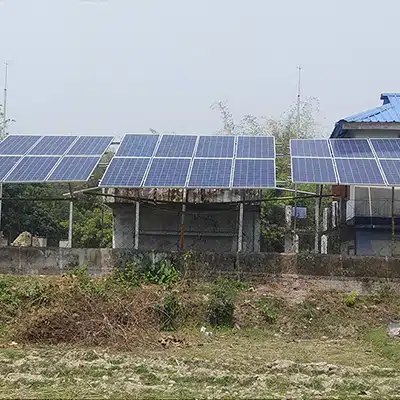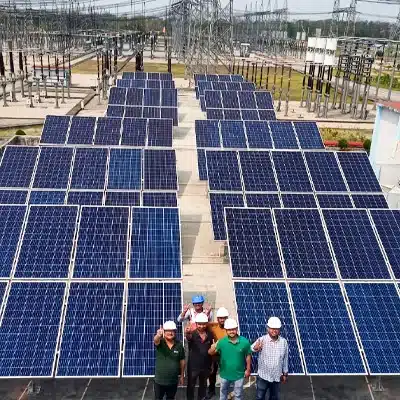
Overview
Dr Rajen Kumar Pandey is an eminent doctor and a passionate advocate for renewable energy. He was the first to introduce a domestic net metering system for his residential on-grid solar rooftop power plant under CESC.
With the 6.6 kWp rooftop solar power plant installed and executed successfully, the roof’s total space remains accessible to residents due to the elevated structure, and the solar panels double as indirect sheds. A super-strong galvanized iron frame can handle 180KMPH due to SunShell’s uncompromising nature and promise of providing only the highest-quality materials. Even when the area around the doctor’s house was devastated by the Amphan phenomenon, the solar plant stood tall.
Our Solution
After assessing the needs, SunShell suggested a 6.6 kWp solar rooftop plant with a grid-connected net metering system. Modules made up of 20 nos 330Wp polycrystalline panels, each with 72 cells were installed. Suggested MA-Zuver inverters with 6kW power and a DC switch. With AJB ( SPD type II, 1000V 40 kA) on a PV string fuse of 1000V 15A, Sunshell ensured the safety and reliability of the plant’s consumers. A simultaneous ACDB with AC SPD, LED indicator light, and suitable MCB is also installed to avoid high voltage damage to the structure. On the LT side, there is also a 415V safe termination system and lightning arrestor with dedicated earthing. SunShell Power adheres to IB and BIS rulebooks when it comes to earthing protection.
In A Glance
- 6.6 kWp solar rooftop plant has a grid-connected net metering system.
- Modules are made up of 20 nos 330Wp polycrystalline panels, each with 72 cells.
- SMA-Zuver inverters with 6kW power and a DC switch are used.
- 7AJB ( SPD type II, 1000V 40 kA) on a PV string fuse of 1000V 15A
- On the LT side, there is also a 415V safe termination system and lightning arrestor with dedicated earthing.
Impact
This 6.6 kWp rooftop solar power plant keeps the roof’s total space accessible for residents due to its elevated structure, and the solar panels also serve as indirect sheds. This saves Dr Rajen Kumar Pandey around INR 4,000 every month on electricity bills.
